Intelligent Universal Circuit Breaker W3 Series
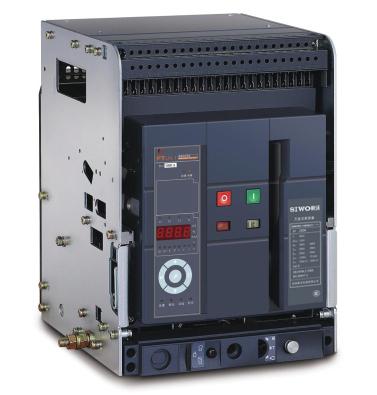
Intelligent Universal Circuit Breaker: ZSEE W3 series is a high-performance air circuit breaker, featuring superior craftsmanship, comprehensive functionality, and reliable safety.
The circuit breaker is suitable for AC 50Hz/60Hz, rated operational voltage of 690V and below, and rated operational current of 6300A and below in distribution networks. It includes functions such as measurement, diagnosis, analysis, communication, precise selective protection, and power monitoring.
Compliance Standards
GB/T 14048.1 “General rules for low-voltage switchgear and controlgear”
GB/T 14048.2 “Low-voltage switchgear and controlgear - Circuit-breakers”
GB/T 14048.4 “Low-voltage switchgear and controlgear - Electromechanical contactors and motor-starters”
GB/T 14597 “Climatic environmental conditions for electrical products at different altitudes”
GB/T 20626 “Electrical and electronic products for special environmental conditions - Part 1: General technical requirements for plateau”
GB/T 2423.1 “Environmental testing for electrical and electronic products - Test methods”
Product Features
- Higher breaking capacity with a smaller size;
- Contacts adopt a two-stage contact structure to effectively protect the main contacts and extend electrical life;
- Equipped with a communication interface to achieve remote control, remote measurement, remote adjustment, and remote signaling;
- The drawer seat automatically determines the “separation,” “connection,” and “test” positions, with automatic locking and manual unlocking, making it safer and more reliable; the terminal wiring methods of the primary system are diverse and can be freely combined.
Model Description
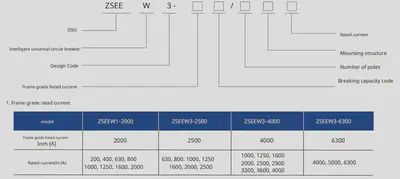
Product Structure
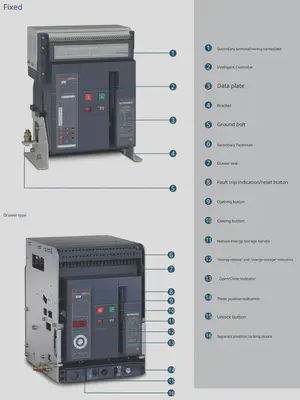
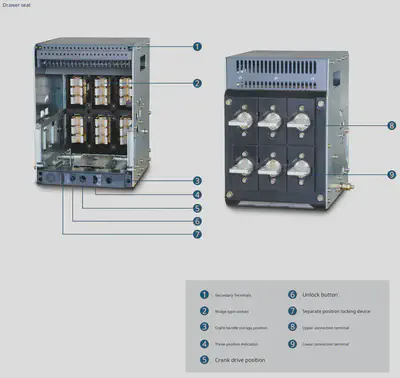
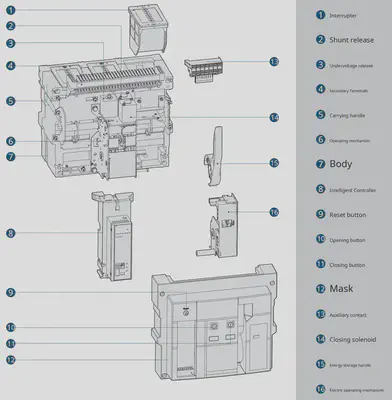
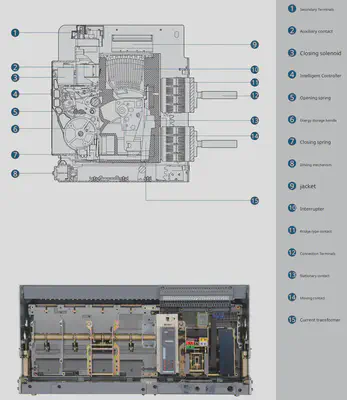
Main Technical Data and Performance Indicators
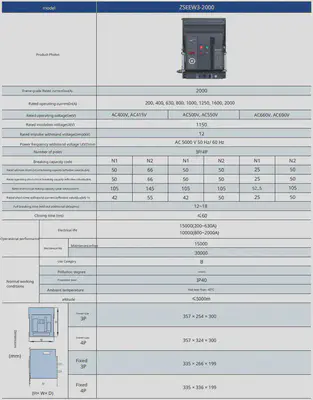
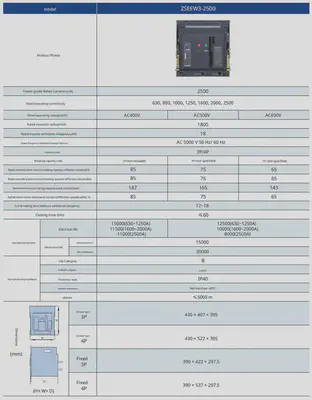
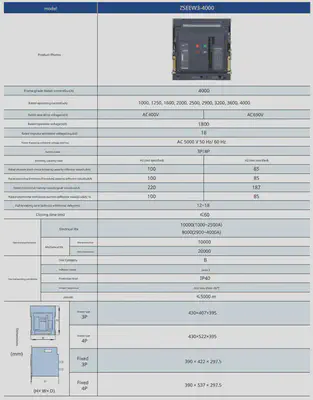
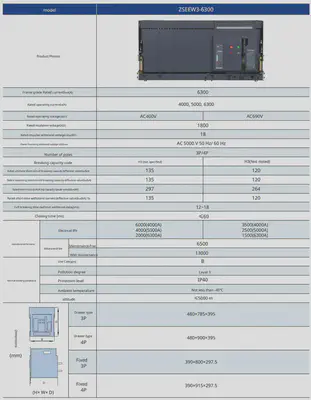
Power Consumption, Derating Factors, and Busbar Specifications
Power Consumption (Ambient Temperature +40°C)
The power consumption is the total power consumption measured when the circuit breaker is passing the rated current Inm of the frame size.

Temperature Derating Factor
When the ambient operating temperature exceeds +40°C, the continuous current carrying capacity can be corrected according to the following table:
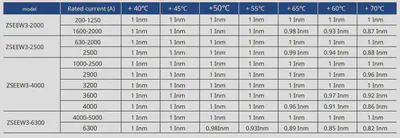
Altitude Derating Factor
When the altitude is greater than or equal to 2000m, the electrical performance of the circuit breaker can be corrected according to the following table:

Busbar Specifications
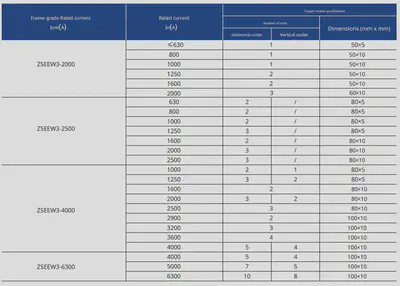
Note: The busbar specifications in the table are for circuit breakers installed in open environments at an ambient temperature of up to 40°C, meeting the heating conditions stipulated in GB14048.2.
Recommended Screw Table for Terminal Hole Diameter

Intelligent Controller
PTU2.1 Intelligent Controller
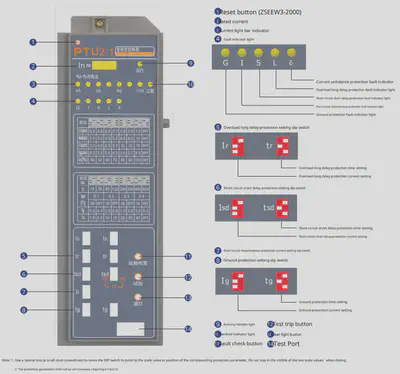
PTU2.1 Intelligent Controller Protection Features

PTU4.1/PTU4.2 Intelligent Controller
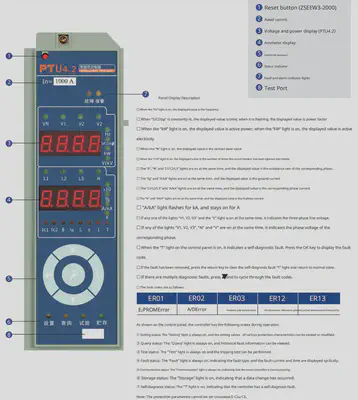
PTU4.1/PTU4.2 Intelligent Controller Protection Features
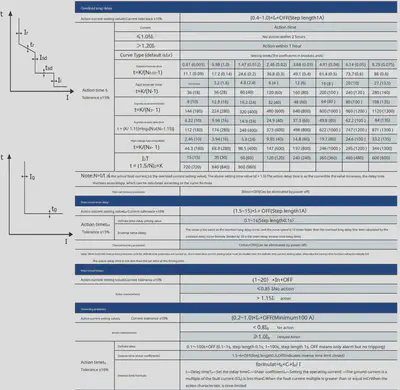
PTU6.1/PTU6.2 Intelligent Controller
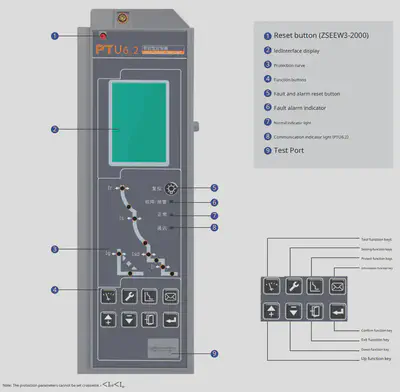
PTU6.1/PTU6.2 Intelligent Controller Protection Features
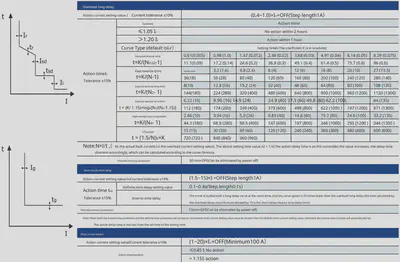
Other Protection Features of the Intelligent Controller
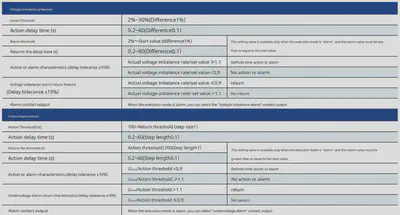
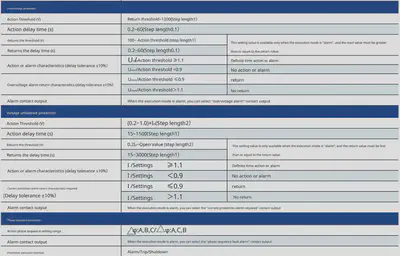
Description of Protection Functions of the Intelligent Controller
Voltage Protection
Undervoltage Protection
The intelligent controller measures the true RMS value of the voltage in the primary circuit. When all three line voltages are lower than the set value, that is, when the maximum of the three line voltages is lower than the undervoltage protection set value, the undervoltage protection is activated. The alarm returns when the maximum of the three line voltages exceeds the return value.
Action Characteristics:
- When the maximum voltage is less than threshold 1, an alarm or trip delay is initiated;
- When the action delay time 2 is reached, an alarm or trip signal is issued, and the undervoltage fault is activated;
- When the maximum voltage exceeds return threshold 3, the return delay is initiated;
- When the return delay time 4 is reached, the alarm is cleared, and the undervoltage fault returns.
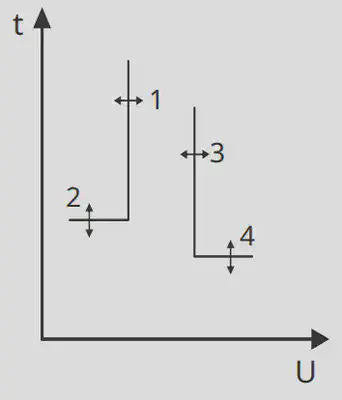
Overvoltage Protection
The intelligent controller measures the true RMS value of the voltage in the primary circuit. When all three line voltages exceed the set value, that is, when the minimum of the three line voltages exceeds the overvoltage protection set value, the overvoltage protection is activated. The alarm returns when the minimum of the three line voltages falls below the return value.
Action Characteristics:
- When the minimum line voltage exceeds threshold 1, an alarm or trip delay is initiated;
- When the action delay time 2 is reached, an alarm or trip signal is issued, and the overvoltage fault is activated;
- When the alarm mode is selected, after the alarm is triggered, and the minimum line voltage falls below return threshold 3, the return delay is initiated;
- When the return delay time 4 is reached, the alarm is cleared, and the overvoltage fault returns.
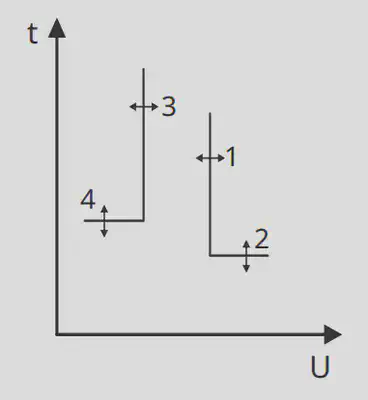
Voltage Imbalance Protection (Only PTU6.1/6.2)
Voltage imbalance protection operates based on the imbalance rate between the three line voltages. The intelligent controller measures the voltage imbalance rate. When the imbalance rate exceeds the set threshold, protection is activated. The alarm returns when the imbalance rate falls below the return threshold.
Action Characteristics:
- When the voltage imbalance rate exceeds threshold 1, an alarm or trip delay is initiated;
- When the action delay time 2 is reached, an alarm or trip signal is issued, and the voltage imbalance fault is activated;
- When the alarm mode is selected, after the alarm is triggered, and the voltage imbalance rate falls below return threshold 3, the return delay is initiated;
- When the return delay time 4 is reached, the alarm is cleared, and the voltage imbalance fault returns.
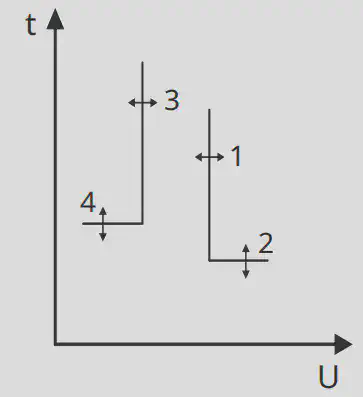
Reverse Power Protection
For generator protection, reverse power may damage the generator during operation. When the power flow is opposite to the set power direction, and the value exceeds the set threshold for the time delay (time-limited action), the circuit breaker trips or issues an alarm signal. If the reverse power in the circuit drops below the return threshold and exceeds the return delay (time-limited action), the breaker clears the alarm signal. The reverse power protection function can be set to enable or disable, with enable options including alarm signal or trip.
Demand Current Protection
Primarily used for process control. When the demand current of a phase exceeds the set threshold, and exceeds the action delay (time-limited action), the circuit breaker trips or issues an alarm signal. If the demand current of that phase falls below the return threshold and exceeds the return delay (time-limited action), the breaker clears the alarm signal. The demand current protection function can be set to enable or disable, with enable options including alarm signal or trip.
Overfrequency Protection
Used for generator protection. When the circuit frequency exceeds the set threshold, and exceeds the action delay (time-limited action), the circuit breaker trips or issues an alarm signal. If the frequency in the circuit drops below the return threshold and exceeds the return delay (time-limited action), the breaker clears the alarm signal. The overfrequency protection function can be set to enable or disable, with enable options including alarm signal or trip.
Underfrequency Protection
Used for generator protection. When the circuit frequency falls below the set threshold, and exceeds the action delay (time-limited action), the circuit breaker trips or issues an alarm signal. If the frequency in the circuit rises above the return threshold and exceeds the return delay (time-limited action), the breaker clears the alarm signal. The underfrequency protection function can be set to enable or disable, with enable options including alarm signal or trip.
Intelligent Controller (T)
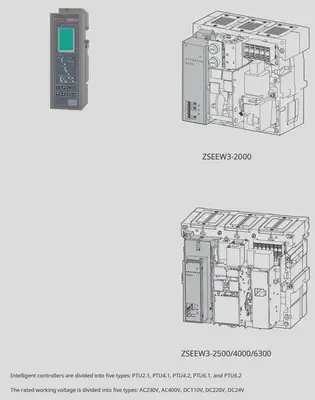
If the user has no special requirements, the intelligent controller is set as follows
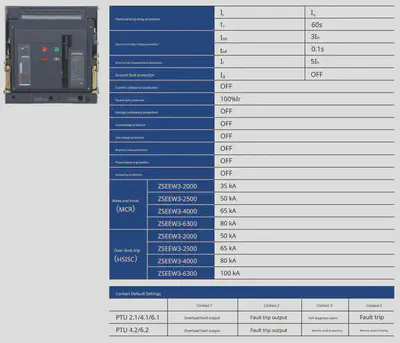
Accessories
Electric Operating Mechanism
The circuit breaker has motor energy storage and automatic recharging functions (the circuit breaker can also be manually charged).
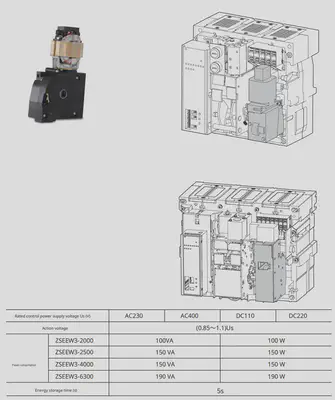
Closing Electromagnet
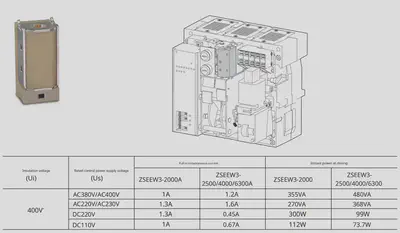
Shunt Release
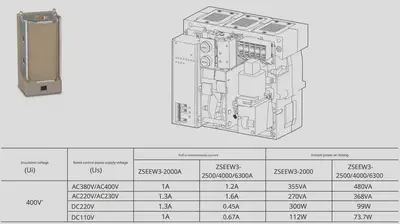
Auxiliary Contacts
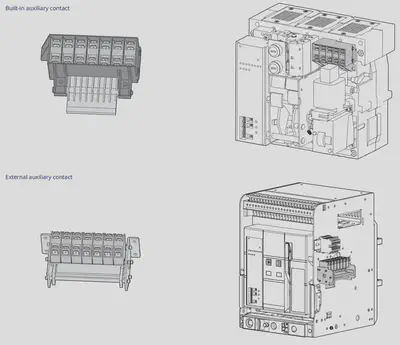
Undervoltage Release
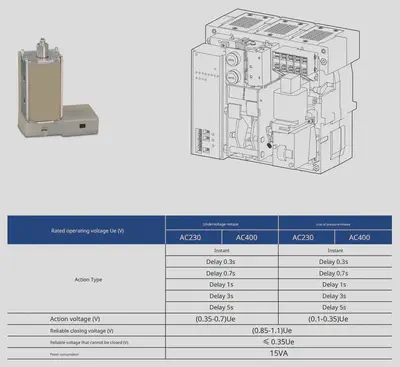
Open Position Lock
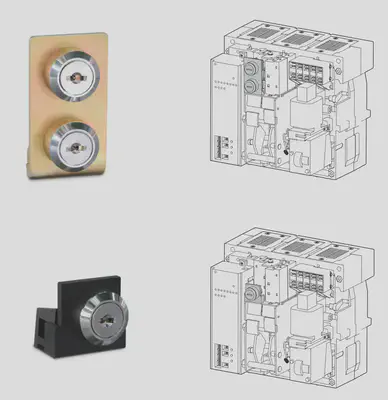
Mechanical Interlock
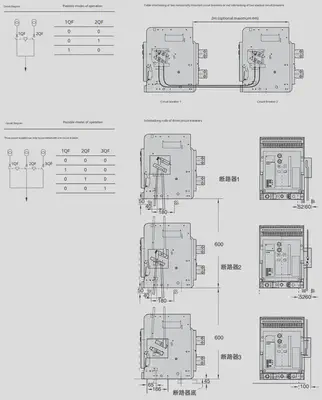
Open/Close Button Lock
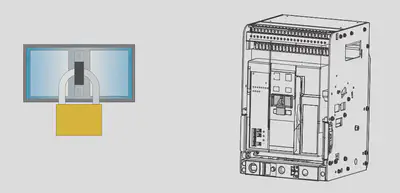
Door Interlock
When the circuit breaker is in the working or test position, the cabinet door cannot be opened. If the door is open and the circuit breaker is in the connected position, the door can be closed without disconnecting the circuit breaker. (The minimum safety distance between the installed device and the circuit breaker is 40mm.)
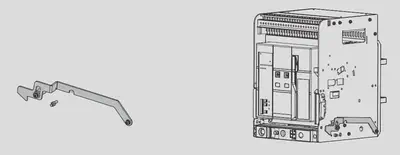
Drawer-Type Circuit Breaker Position Locking Device
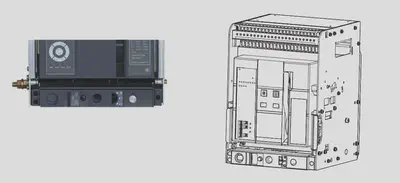
Phase Partition Plate
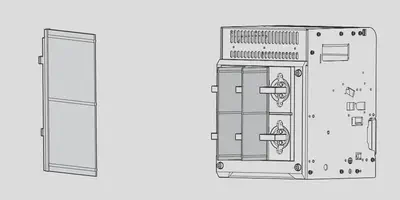
Power Module
Input power: AC230V/AC400V/DC110V/DC220V (optional)
When using grounding protection, communication, thermal memory functions, or requiring the circuit breaker to maintain input and output signals in the open state, an auxiliary power supply must be provided. When selecting a DC-type intelligent controller, the DC power must be converted to DC24V through the DC power module and then supplied to the intelligent controller. (The minimum safety distance between the installed device and the circuit breaker is 60mm.)
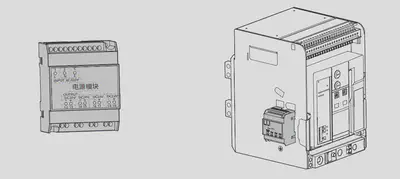
Electrical Diagrams
ZSEEW3-2000 Electrical Diagram
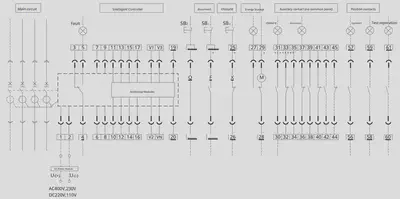
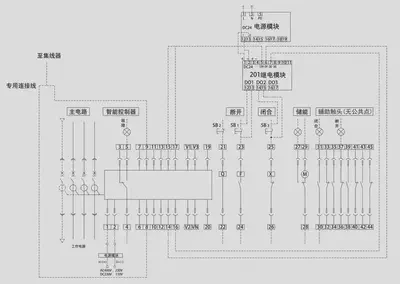
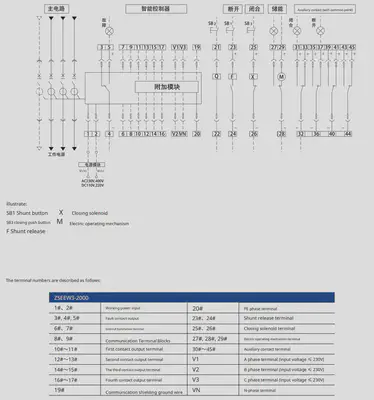
ZSEEW3-2500/4000/6300 Electrical Diagram
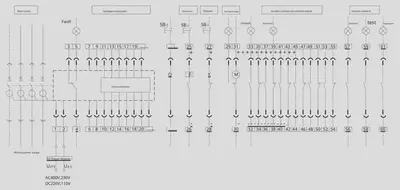
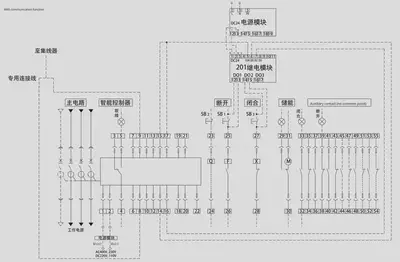
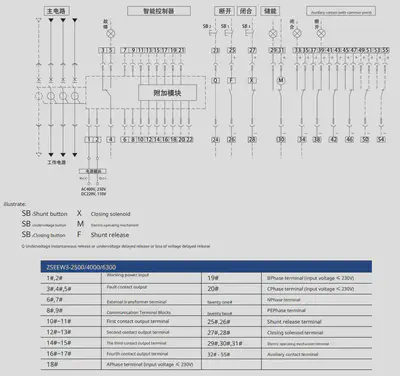
Appearance and Installation Dimensions
Drawer-Type (ZSEEW3-2000)
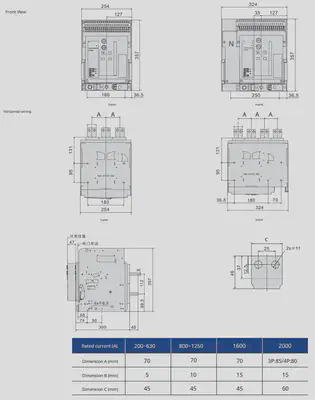
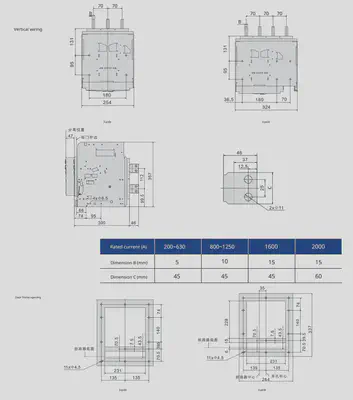
Fixed Type (ZSEEW3-2000)
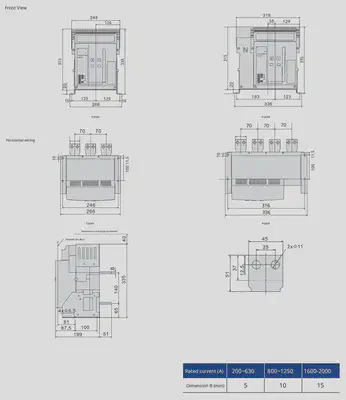
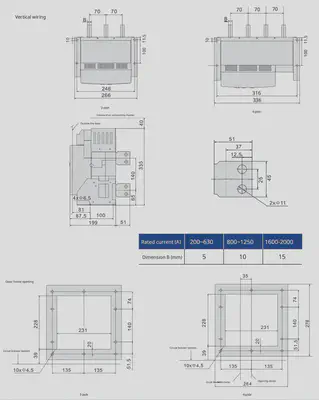
Drawer-Type (ZSEEW3-2500)
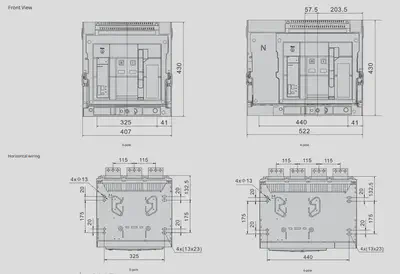
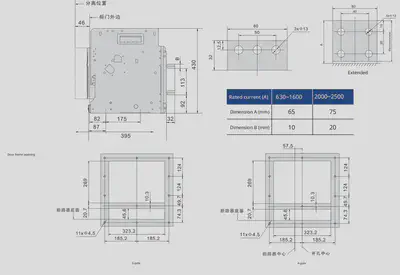
Fixed Type (ZSEEW3-2500)
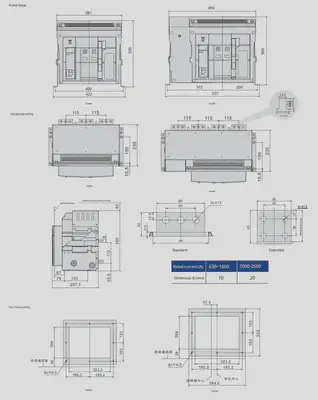
Drawer-Type (ZSEEW3-4000)
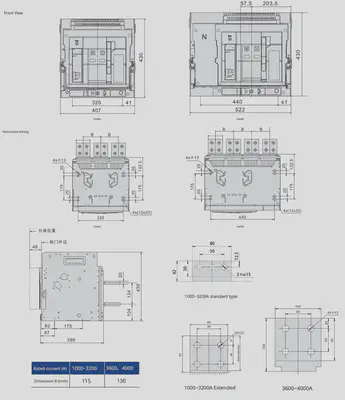
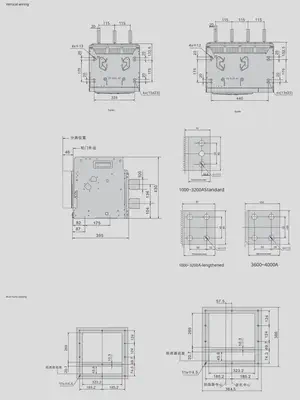
Fixed Type (ZSEEW3-4000)
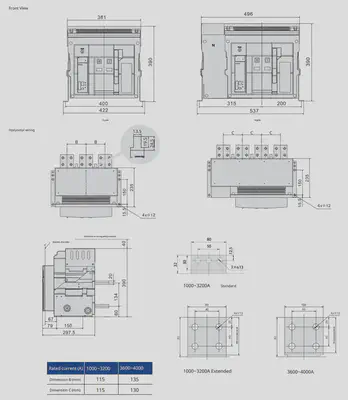
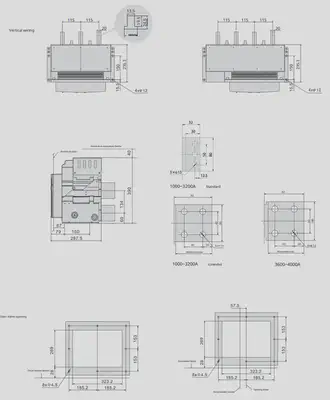
Drawer-Type (ZSEEW3-6300)
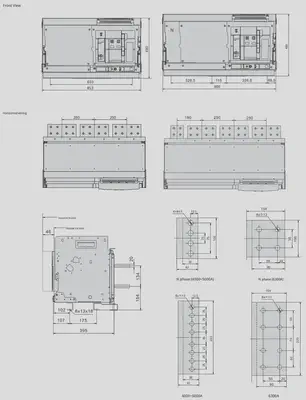
Fixed Type (ZSEEW3-6300)
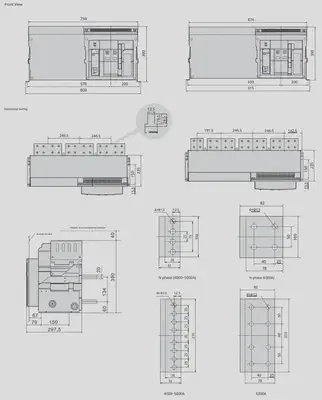
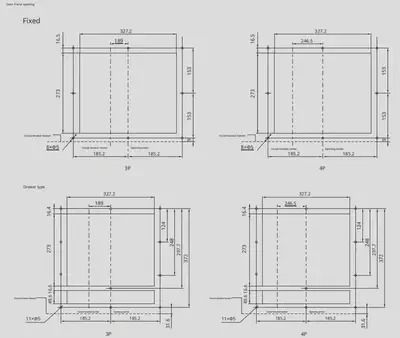
Order Specifications
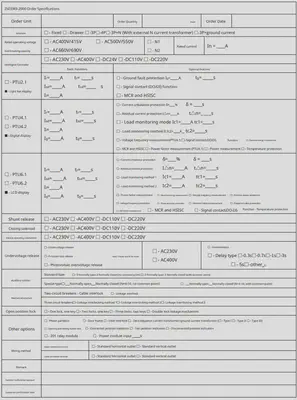
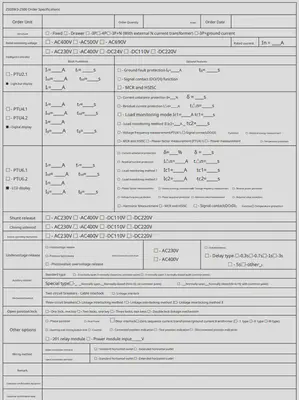
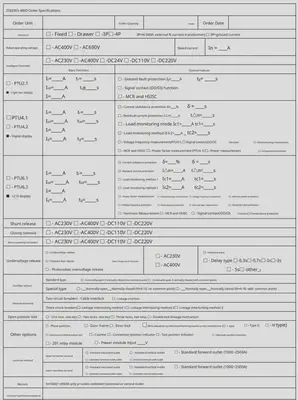
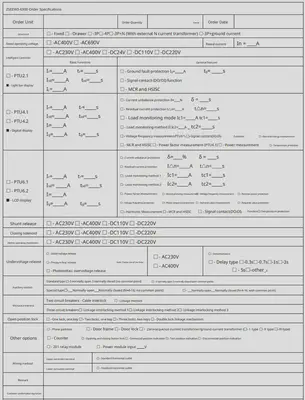
CBI-Y Grade Circuit Breaker Model Description
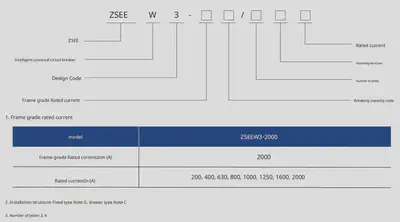
CBI-Y Grade Circuit Breaker Main Technical Data and Performance Indicators
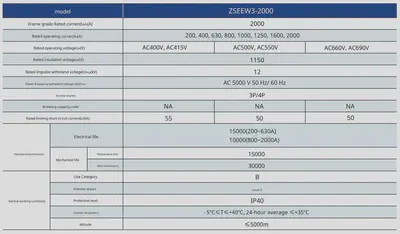
CBI-Y Grade Circuit Breaker Order Specifications
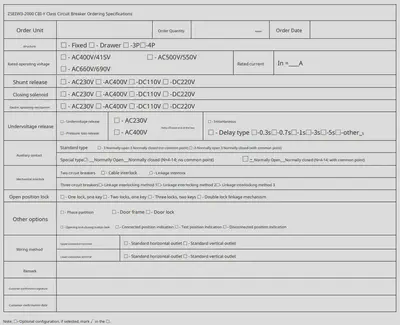
- Due to continuous upgrades and optimizations of our products, all information in this document is subject to the actual product. Changes may be made without prior notice. Our company and its employees are not liable for any disputes caused by unconfirmed information in this document without validation from our sales department.